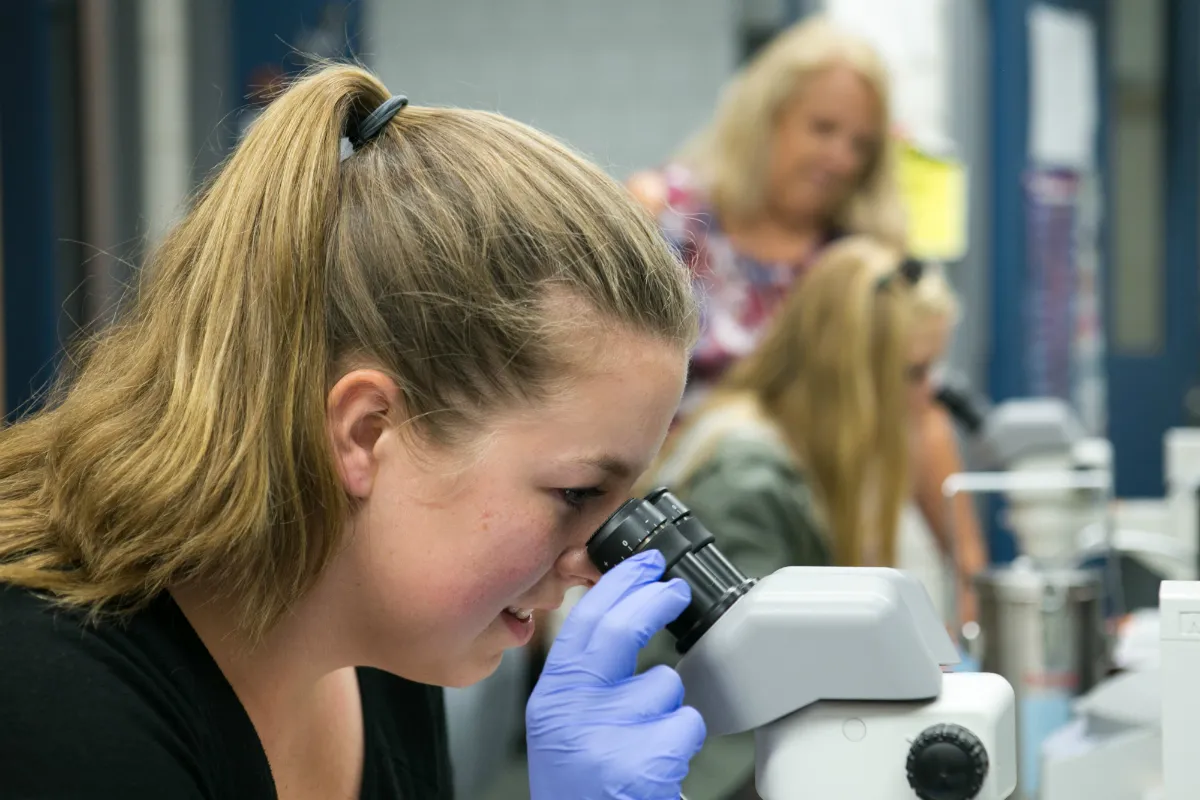Last spring Jean Hardwick was awarded a three-year research grant worth more than $300,000 from the National Institutes of Health to support her research on heart disease. There was one catch: students needed to be involved in the research.
That’s no problem for Hardwick, a professor of biology who has enlisted students in her research for the last 20 years. In fact, since 1997, Hardwick has given more than 60 students advanced lab experience (which is unusual for undergraduate students). The students have been an important part of her research into how the unconscious nervous system changes when the heart is diseased, with an aim to build an understanding that can lead to better treatments. They compare the activity and makeup of neurons — the primary control mechanisms for heart function — in healthy guinea pigs to those in guinea pigs who’ve been given the symptoms of a heart attack through a lab procedure.
The NIH grant allowed the lab to purchase new equipment for sophisticated electrical recordings from neurons, and funded student research opportunities during the summer. Where most research in this field studies the way the nervous system ramps up to compensate for the disease, Hardwick’s work focuses on the mechanisms that would normally control such accelerations. By understanding all the mechanisms in play, she believes treatments could be developed that bring them all into better balance, minimizing the side effects of medications.
“A lot of the medications we take are kind of like putting a club to the body and beating it into submission, but if we could be more refined, you could make a medication that would target just the parts that are the most problematic,” said Hardwick.
In the lab, Hardwick can record activities in a single cell of a piece of heart tissue while its neurons are still connected and communicating, giving her team unique insights. Data they collect includes electrical signals, positions of molecules, the presence of proteins and the role of genes, all of which help to paint a picture of what changes when heart tissue becomes diseased.
This summer, Hardwick had two students working in her lab. Lydia Loiselle ’20 confirmed predictions that cell sizes in certain diseased tissue are larger than healthy tissue, adding to the biological understanding of heart disease. And Katie Hutton ’19, who has worked in the lab for three years, last spring presented two papers on her research: one at the National Symposium for Undergraduate Research at the St. Jude Children’s Research Hospital Graduate School of Biomedical Sciences in Memphis, Tennessee, the other at the Eastern College Scientific Conference, hosted by IC.
“The goal of my research is, yes, to do the science, but it’s also for the students,” Hardwick said. “So you’re doing science for the students that’s meaningful, really.”
